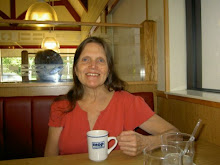In 1953, Mr. Salinger settled in Cornish, where he lived in a hilltop cottage overlooking the Connecticut River. He attended no literary conferences, gave no lectures, and almost invariably spurned all human contact. If anyone approached him in a public street or building, he turned and fled. He was rarely photographed, and he directed his publisher to remove his photograph from the dust jacket of "The Catcher in the Rye." His attorneys and agents were instructed not to answer questions about him.
For nine months in 1972 and 1973, Mr. Salinger had an affair with Joyce Maynard, who dropped out of college during her freshman year at Yale to move in with him. Maynard had written an article for the New York Times Sunday Magazine, "An 18-Year-Old Looks Back on Life," that had caught Mr. Salinger's attention. He wrote to her, and for several weeks, they corresponded before she left Yale to live with him in New Hampshire."
-Washington Post
Fredelle was a lovely lady who told me many things about her daughters, including the fact that Joyce was living in New Hampshire with her babies and husband. This was several years after 1973, so she wasn't with Salinger at that time. I didn't know anything about the Salinger/Maynard connection until decades later, so was attracted to and enamoured of her life for its seeming purity, which Mrs. Maynard described as "back-to-the-land" rural living. I remember her telling me Joyce used only cloth diapers. To me back then, this was my idea of paradise. I gave her copies of my magazine "Nurturing" and we never spoke again, although we thought we would. I was sad to hear that she died of brain cancer in 1989.
Everyone speaks of "Catcher in the Rye", and, of course, I was required to read it in junior high. I don't remember one thing about it, not one thing. My favourite Salinger book was "Franny and Zooey", which our teacher, thankfully, had us read, too. Published 10 years later, it was more readable - what I hoped "Raise High the Roof Beam, Carpenters" would be but was not - and revolved around two of the seven Glass children, the youngest daughter and older brother. My family did not resemble the Glass family in the least, so I had nothing to latch onto, and the interest that should have been there - glimpsing life in an eccentric Jewish family - was lacking, but I liked the book nonetheless and was glad to have read it.
What fascinates me now is Salinger's own subsequent life as a self-imposed recluse - which I can relate to in my senior citizenhood, more than somewhat. I am a fairly normal person who like to be alone and to be left alone unless I want to be among people, but for someone like Salinger, with brooding problems far deeper than anything I've experienced, the desire to be left alone seems only natural. After all, he had been through the war and seen things I've never seen and suffered wartime stress before it was recognized as collateral war damage. He was also briefly married to a Nazi named Sylvia to whom he later referred to as Saliva. He was an angry man who belittled members of his own family, according to his daughter Margaret's memoir, and who seemed to prefer his made-up characters to real people.
From Margaret Salinger's "Dream Catcher"
"He was unable or unwilling to sustain close personal relations with anyone, she said: "His search . . . led him increasingly to relations in two dimensions: with his fictional Glass family, or with living 'pen pals' he met in letters, which lasted until meeting in person when the three-dimensional, flesh-and-blood presence of them would, with the inevitability of watching a classic tragedy unfold, invariably sow the seeds of the relationship's undoing."What a telling statement. It has its counterpart in today's great social network, Facebook, where many of our "friends" are basically unknown to us befrienders, added only because we know who they are or have heard of them. Some we have never met, and I suspect, were we to have the chance to get together in person, we, like Salinger with his penpals, would have no interest in them at all.



No comments:
Post a Comment